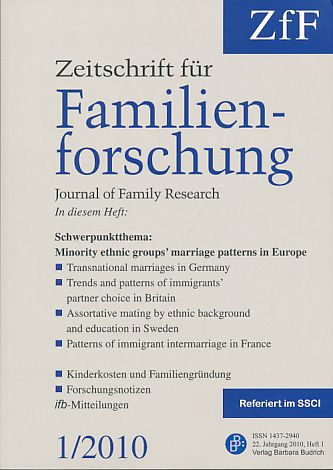Hašková, Hana, Klenner, Christina. 2010. „Why did distinct types of dual-earner models in Czech, Slovak and East German societies develop and persist?“. Zeitschrift für Familienforschung/ Journal of Family Research. 22 (3): 266-288. ISSN 1437-2940.
We examine pre1989 and post1989 work-care models in Czech, Slovak and East German societies. Once problems of the modernized gender model emerged, Czechoslovakia and GDR set two distinct policy paths and differences in work-care practices and values emerged. Based on the institutional and cultural legacy, we explain why the post1989 transition period was accompanied by continuity in work-care models and substantive changes evolved only then, in a period of stability.
Authors
Department
Topics
Gender, Work
